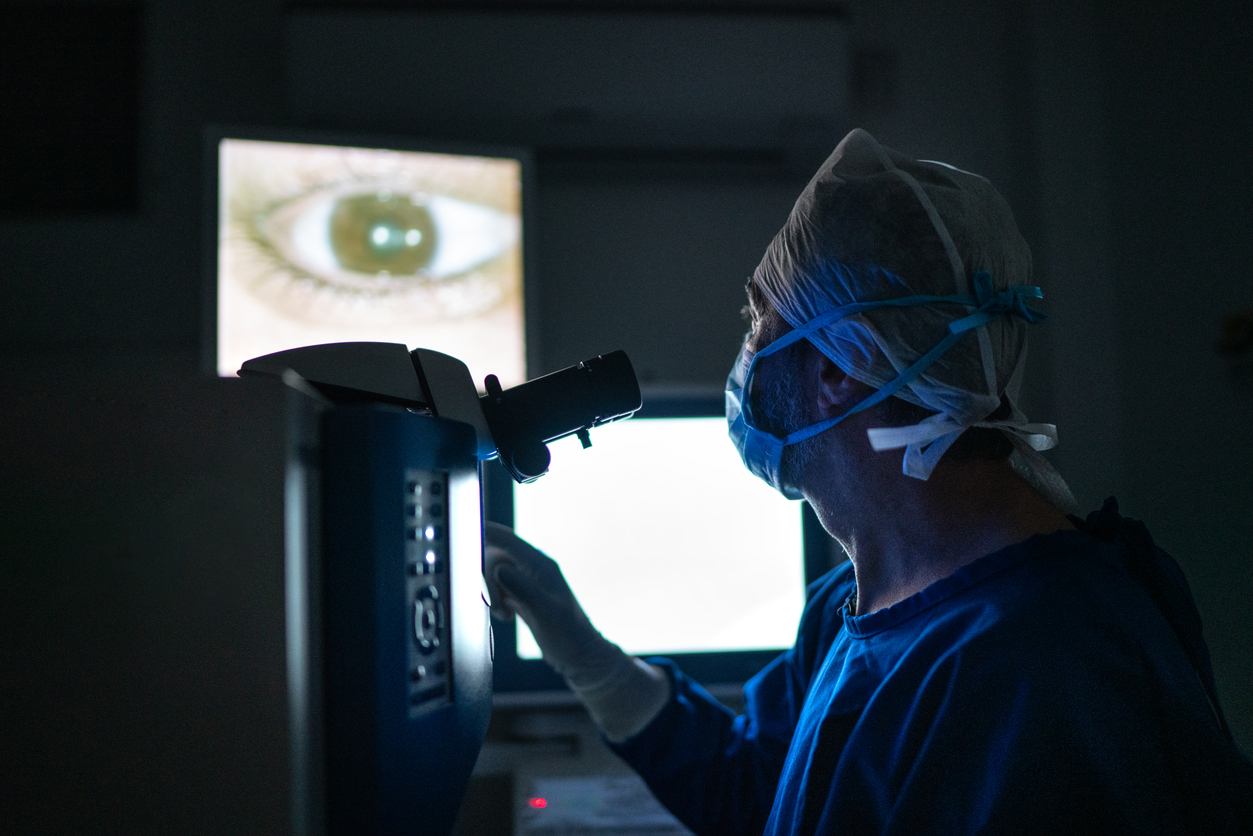Behind the Field of Vision Spotlight: Dr. Stuart Tims, M.D.
Meet Dr. Stuart Tims, ophthalmologist specializing in cataract, cornea, and refractive surgery at Vistar Eye Center.
Getting into Ophthalmology
Healing others runs in the family. Dr. Tims chose to attend medical school because his father worked in emergency medicine and urgent care at a local hospital in the Roanoke area. Also, while growing up with his brother who suffered a trauma that required years of medical care and treatment, Dr. Tims decided he wanted to become a doctor to help others.
“The most fulfilling part of the job is being able to provide a treatment to a patient who’s struggling with their vision and being able to give them the results that we all want; helping to restore or protect their eyesight,” says Dr. Tims.
As he went through medical school at the University of Virginia, Dr. Tim’s was inspired to specialize in ophthalmology because of Dr. Ken Tuck, a well-known ophthalmologist in the area. A friend from school introduced Dr. Tims to Dr. Tuck. He spent a summer shadowing Dr. Tuck in the very building where he currently practices and immediately knew that he had found his specialty.
Dr. Tims has been at Vistar Eye Center for over 10 years now. “I wake up every day feeling fortunate that I am able to do something that I enjoy so much and that makes such a difference for people.”
Innovations in Corneal Treatment
Like many of the doctors at Vistar Eye Center, Dr. Tims performs a variety of eye care surgeries on a regular basis. But one of the newest procedures that Dr. Tims has spearheaded at Vistar Eye Center is cross-linking. Cross-linking is a procedure used to treat keratoconus, which is when the cornea develops a cone-like bulge. This irregularity results in blurry vision and difficulty seeing, especially at night due to high degrees of astigmatism.
The Cross-Linking Procedure
Before the cross-linking procedure was developed, there was no way to prevent progression of the condition, which ultimately can lead to the need for corneal transplant surgery. By comparison, the cross-linking procedure is a much simpler procedure with quicker recovery periods.
“We numb the eye one at a time and a small abrasion is made on the surface of the cornea. We instill specialized riboflavin eye drops into the eye every two minutes for thirty minutes.” says Dr. Tims.
This medicine saturates into the tissue of the cornea. After the first thirty-minute mark, the surgeon shines a specialized type of UV light on the surface of the cornea as eye drops are continuously placed in the eye for an additional thirty minutes. “During this time, the riboflavin is activated by the UV light and binds to the collagen of the cornea, creating stronger bonds,” Dr. Tims mentions. “It acts almost like reinforced steel inside the cornea. This allows the cornea to be stronger, more compact, and resist the chance to progress into a thinner, more damaged cornea later on in life.”
Even though the procedure is less intensive than a corneal transplant, patients should still be prepared for a recovery period. “After this procedure, there is an abrasion that has to heal. The eye is sensitive, sore, and waters but the sensation passes relatively quickly.” In addition, a band aid contact lens is placed in the eye to help promote healing.
Although cross-linking hadn’t been developed prior to him attending medical school, Dr. Tims says there’s always room for learning new skills as ophthalmology continues to innovate. “It’s very exciting to be practicing medicine, especially ophthalmology and corneal surgery, at a time when we actually have preventative treatment that can protect patients from future problems such as a need for more invasive surgery, potential risks and complications.”
Dr. Tims Outside the Office
Outside of work, Dr. Tims enjoys spending time with his wife, Jessica, and their three children, Campbell, Tucker, and Barrett. Dr. Tims and Jessica are high school sweethearts. The two Roanoke natives enjoy raising their kids in the city in which they grew up. “It’s great to take them to places we went as kids and do the activities we used to do, and share that with them,” Dr. Tims says. “We love them so much, it’s a unique experience unlike any other.”
Dr. Tims is a sports fanatic. “I’m involved in sports, formerly playing and now coaching little league baseball.” he says. While he’s not coaching or wrangling his kids, Dr. Tims is an avid concert-goer and a poker player. To relax, he likes to watch baseball and basketball, hit a few rounds on the golf course, fish, hike, or hang out with his family.

